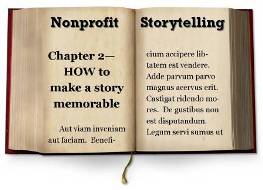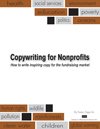Did you miss the first chapter – When to tell a story (Chapter 1)? Catch it here.
Today I’ll cover the basic building blocks of a memorable story (per Peter Gruber, CEO of Mandalay Entertainment Group and former studio chief at Columbia Pictures).
 A compelling and memorable story has Challenge, Struggle, and Resolution.
A compelling and memorable story has Challenge, Struggle, and Resolution.
It takes all three.
The challenge is how you capture the listener’s or reader’s attention. You set the hook. Often it’s an unexpected situation or question.
People want to know it’s worth their time to read and that they’ll be rewarded with a captivating story. The challenge sets their expectations.
The struggle follows the challenge. This is generally the bulk of the story. The main character in your story is overcoming the challenge or finding the answer to the opening question.
And it’s also where you give your listeners or readers an emotional experience.
The emotional aspect is critical. Without it a story is more like a lecture – possibly interesting but not memorable, stirring, or rewarding. A lecture doesn’t pull the listener in and involve them by triggering the senses and causing the listener to feel. It doesn’t make them part of the experience.
But emotion does all that. So write stories that move readers and listeners to feel sorrow, anguish, relief, heartache, sympathy and empathy . . . to smile or cry . . . to be angry or to yell.
What about the resolution? After all, you can’t leave them hanging (figuratively speaking).
How was the main character transformed? What did he overcome? How did she persevere? How did it all fall into place at the end?
Finally, for a story to be memorable the ending comes as a surprise. The ending doesn’t match what the reader expected. The surprise ending triggers something in our brain and the story become memorable. We’ve been rewarded. This is part of the science of storytelling. Our brains are wired to respond favorably to surprise endings.
Challenge, struggle, resolution.
One more tip: Present these three building blocks in that order. Challenge followed by struggle followed by resolution.
Rarely can a writer create a powerful, engaging, compelling and memorable story by changing the order. It can be done. But it’s quite difficult because a different order is contrary to the wiring in our brains. Therefore you have to overcome a lot in order to write a great story that doesn’t follow the natural order.
As Gruber states: Listeners and readers are rarely hooked if they don’t sense a compelling challenge in the beginning. They won’t stay engaged if they’re not excited by the struggle of the middle. And they won’t remember or act on the story unless they feel galvanized by its final resolution.
Between Chapter 1 and Chapter 2 of Nonprofit Storytelling, you now have the foundation of a memorable story. Build upon it. Practice the art of storytelling … but as you practice, don’t forget the science that makes it effective for your nonprofit.
And don’t forget to connect the resolution to your call-to-action. Galvanize readers and listeners to respond.
——
Related posts:
How Science Helps You Write Better Fundraising Stories

{ 4 trackbacks }
{ 0 comments… add one now }